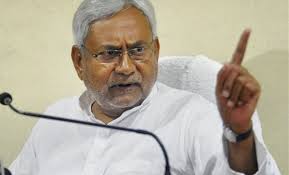Srinagar, Mar 7: Two more accused, including a man who allegedly bought chemicals online for making improvised explosive device (IED) to be used in an attack on a convoy of the Central Reserve Police Force (CRPF) in Jammu and Kashmir's Pulwama last year, were arrested by the National Investigation Agency (NIA) on Friday, an official said.
The terror attack left 40 CRPF personnel dead in south Kashmir's Pulwama last year.
Waiz-ul-Islam, 19, from Srinagar and Mohammad Abbass Rather, 32, from Pulwama were arrested by the NIA, taking the number of those arrested in the case in the past week to five.
"During initial interrogation, Islam disclosed that he used his Amazon online shopping account to procure chemicals for making IEDs, batteries and other accessories on the directions of Pakistani Jaish-e-Mohammed (JeM) terrorists," the official said.
He said Islam personally delivered the items to the JeM terrorists after buying them online as a part of the conspiracy to carry out the attack.
"Rather is an old overground worker of the JeM. He has disclosed that he gave shelter at his home to Jaish terrorist and IED expert Mohd Umar after he came to Kashmir in April-May 2018," the official said.
Rather also sheltered other JeM terrorists - suicide bomber Adil Ahmad Dar, Sameer Ahmed Dar and Kamran, a Pakistani -- at his house before the Pulwama attack, the official said.
"He also facilitated safe shelter for the JeM terrorists, including Adil, at the house of accused Tariq Ahmed Shah and his daughter Insha Jan of Hakripora, who were arrested on March 3," the official said.
He said Islam and Rather will be produced before the NIA special court in Jammu on Saturday, while further investigation in the case continues. The NIA took over the case to probe the conspiracy behind the February 14, 2019, attack in Pulwama.
The last video of Adil, which was released by the JeM from Pakistan after the terror attack, was filmed at the home of Tariq Ahmed Shah. On February 28, the NIA achieved a major breakthrough in the case when it arrested 22-year-old Shakir Bashir Magrey, a furniture shop owner and resident of Pulwama.
Magrey had given shelter and other logistical assistance to suicide bomber Adil. He was introduced to Adil in mid-2018 by Pakistani terrorist Mohammad Umar Farooq and he became a full-time OGW of the JeM.
The explosives used in the attack were determined through forensic probe to be ammonium nitrate, nitro-glycerin and RDX. During investigation into the attack, the identity of the suicide bomber to be Adil Ahmad Dar was confirmed through DNA matching with that of his father.
The other key terrorists involved in the attack have been found to be JeM's south Kashmir divisional head Muddasir Ahmad Khan, killed in an operation by the security forces on March 11 last year; Pakistani terrorists Muhammad Umar Farooq and IED expert Kamran, both killed on March 29 last year; the owner of the car Sajjad Ahmad Bhat, a resident of Anantnag who was killed on June 16 last year, and Qari Yassir, JeM's commander for Kashmir who was killed on January 25 this year.







Comments
Add new comment